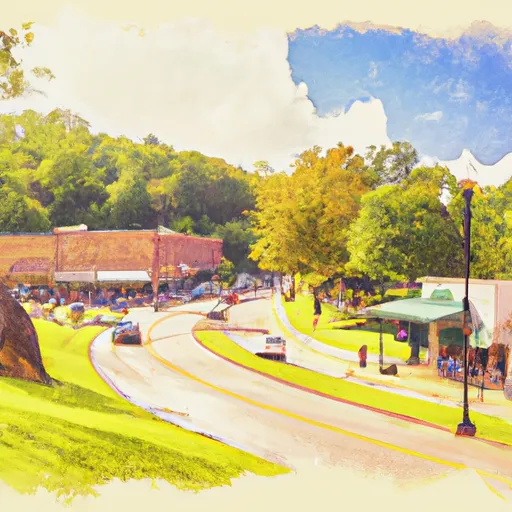-
 Snoflo Premium
Snoflo Premium
Get unlimited access to all our content
With no Ad interruptions! - Start Your Free Trial Login with existing account
Mammoth-Cave-Nat
Eden Index
Climate
7.8
•
Recreation
6.3
•
Community
•
Safeguard
5.3/10

Mammoth Cave National Park, located in Kentucky, is an extraordinary natural wonder known for its vast underground cave system. In terms of climate, the park experiences a humid subtropical climate with hot summers and mild winters. Average temperatures range from around 35°F (-2°C) in winter to 85°F (29°C) in summer. Rainfall is evenly distributed throughout the year.
Hydrologically, Mammoth Cave National Park is home to the Green River, which flows through the park's heart. The river provides an excellent opportunity for water activities such as kayaking, canoeing, and fishing. Many smaller streams, springs, and sinkholes can also be found within the park, contributing to its unique hydrological environment.
Outdoor recreation enthusiasts will find a plethora of activities to enjoy in Mammoth Cave National Park. The park offers over 80 miles of hiking trails, ranging from easy strolls to challenging hikes. Exploring the cave system is a popular activity, with guided tours available to visitors. Additionally, camping, horseback riding, wildlife viewing, and birdwatching are among the many activities that can be enjoyed in this picturesque national park.
What is the Eden Index?
The Snoflo Eden Index serves as a comprehensive rating system for regions, evaluating their desirability through a holistic assessment of climate health, outdoor recreation opportunities, and natural disaster risk, acknowledging the profound impact of these factors on livability and well-being.
Climate Health Indicator (CHI): 7.8
Mammoth-Cave-Nat receives approximately
1320mm of rain per year,
with humidity levels near 83%
and air temperatures averaging around
14°C.
Mammoth-Cave-Nat has a plant hardyness factor of
6, meaning
plants and agriculture in this region thrive during a short period during spring and early summer. Most
plants will die off during the colder winter months.
By considering the ideal temperature range, reliable water supplies, clean air, and stable seasonal rain or snowpacks, the Climate Health Indicator (CHI) underscores the significance of a healthy climate as the foundation for quality living.
A healthy climate is paramount for ensuring a high quality of life and livability in a region, fostering both physical well-being and environmental harmony. This can be characterized by ideal temperatures, reliable access to water supplies, clean air, and consistent seasonal rain or snowpacks.
Weather Forecast
Streamflow Conditions
Green
Area Rivers
Green
Snowpack Depths
Green
Reservoir Storage Capacity
Green
Groundwater Levels
Recreational Opportunity Index (ROI): 6.3
The Recreational Opportunity Index (ROI) recognizes the value of outdoor recreational options, such as parks, hiking trails, camping sites, and fishing spots, while acknowledging that climate plays a pivotal role in ensuring the comfort and consistency of these experiences.
Access to outdoor recreational opportunities, encompassing activities such as parks, hiking, camping, and fishing, is crucial for overall well-being, and the climate plays a pivotal role in enabling and enhancing these experiences, ensuring that individuals can engage in nature-based activities comfortably and consistently.
Camping Areas
| Campground | Campsites | Reservations | Toilets | Showers | Elevation |
|---|---|---|---|---|---|
| Bucks Pocket State Park | 36 | 890 ft | |||
| Lake Guntersville State Park | 366 | 630 ft | |||
| Marshall County Park | None | 598 ft | |||
| Goose Pond Colony | None | 618 ft | |||
| Jackson County Park | None | 627 ft | |||
| Tims Ford State Park | 52 | 936 ft | |||
| Arnold AFB Military | None | 1,001 ft | |||
| Cathedral Caverns State Park | None | 643 ft | |||
| Barton Springs - Normandy Lake | 67 | 885 ft | |||
| Noccalula Falls Campground | None | 732 ft |
Nearby Ski Areas
Catastrophe Safeguard Index (CSI):
The Catastrophe Safeguard Index (CSI) recognizes that natural disaster risk, encompassing floods, fires, hurricanes, and tornadoes, can drastically affect safety and the overall appeal of an area.
The level of natural disaster risk in a region significantly affects safety and the overall livability, with climate change amplifying these risks by potentially increasing the frequency and intensity of events like floods, fires, hurricanes, and tornadoes, thereby posing substantial challenges to community resilience and well-being.
Community Resilience Indicator (CRI):
The Community Resilience Indicator (CRI) recognizes that education, healthcare, and socioeconomics are crucial to the well-being of a region. The CRI acknowledges the profound impact of these elements on residents' overall quality of life. By evaluating educational resources, healthcare accessibility, and economic inclusivity, the index captures the essential aspects that contribute to a thriving community, fostering resident satisfaction, equity, and social cohesion.

